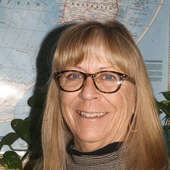- Research tips and McCook Brick Company- solid as a brick (12/16/24)
- Big Give appreciation and some railroad characters (11/15/24)
- George Randel becomes a landowner, gets married, and takes in a Buffalo Bill show (9/20/24)
- The memoirs of George F. Randel, early settler of Red Willow County (9/12/24)
- Vietnam War Memorial honors Nebraskans who served (6/13/24)
- McCook business promotions - just prior to 1893 stock market crash (5/30/24)
- Shall we dance? Meet you at the Gayway (12/8/23)
Genealogy website has many features
Friday, November 8, 2019
When I was a little girl and my dad got called to work, I would tell him that I wanted to work for the railroad and go ďearn the beansĒ, as he always said he had to do. That wish came true some 40 years later but another of my occupational wishes never did, and that was to be a teacher.
It wasnít for a lack of trying, I started college with that goal, but luckily before I expended a whole lot of time in the education fast track, I learned a very important thing about myself: I am no teacher. Iím a learner, a debater, a writer, many things make up the list of what I can do, but when it comes to imparting knowledge to another person in a form that they can understand and learn from, thatís just not me. So, fair warning, in this column I hope to share some of the wonderful things you can find on the SWNGS website and hopefully it will be in an easy to follow form!
The Southwest Nebraska Genealogical Society is a non-profit group whose purpose is to preserve history and then share that information with anyone who wishes to access it. Consequently, our website, www.swngs.org, is completely accessible and free to use by anyone, not just members.
Tom Corey has spent countless hours creating what can only be described as one of the most comprehensive Learning Centers for research available on a societyís web page. When you go to our website, click on the tab located on the left of the Home Page to reach the center.
When you reach that page, you will find 13 tabs that categorize the subjects available: Forms; Genealogy; Terms Acronyms; Questions; Census Records; Land Records; Pedigree Chart; Family Group; Churches; Mayflower Research; Military Records.
As an example, by clicking on Census Records, you pull up another screen which lists all available US Federal Census Records from 1790 up. Each decade list includes what information you can glean from that particular census. In the 1860 Census you will learn: Name of each person in the household and their age, sex, and race; Value of real estate and personal estate; Occupation of each person; Birthplace by state; Marriages that took place in 1860; School Attendance; Literacy; Anyone in the household that was deaf, dumb, blind, insane, idiotic, pauper or convict; Number of slaves houses. There should be a supplemental schedule for slaves and persons who died that year.
No Federal Census is exactly alike so by being able to check this guide you can narrow the years you search for information concerning ancestors. If 1860 didnít ask about pensioners or naturalization and thatís what you are searching for, you can bypass that decade.
In the Forms area you will find: Family Group Sheet; Pedigree Chart; Individual Data Compiler; Research Log. Each of these can be filled out on your computer, printed and/or saved. My favorite is the Individual Data Compiler. When you are researching a family, quite often the information for several individuals is found on one form, such as a census. With the data compiler, you can take each person and fill in the blanks and then at the bottom note where this information was gathered from. That way, you only have to make one copy of say, the 1860 census, record the information for all family members found on that census on their individual sheets and note where your copy is found. I love this! No more making 11 copies for each person. I can hardly wait to weed out my voluminous files.
I hope that you all make use of the new website areas and if you have trouble using any area, helpful volunteers are at our library every Tuesday and Thursday (weather permitting) from 1-4 PM. Located at 110 West C, Suite M-3, there is an elevator for those who need the assistance.
Many thanks to those who remembered us during the Big Give! All of the work done by this society is done with volunteer labor and every dollar is used wisely.

